Add Custom Labels to Your Data with Tableau Catalog
A New Dimension to Your Tableau Data
Consumers, creators, and admins alike, we have a lot of questions about the data we see in Tableau. Did my dashboard’s data refresh today? Should I broadly share this data source? Is this data set critical to our business? And these questions become more challenging to answer as your Tableau environment grows.
Tableau Catalog has begun changing how data teams scale and manage their analytics with column-level lineage, quality alerts, and data details on demand. Now, with Data Labels, you can add a new dimension to your Tableau data and see them in the context of wherever you are in Tableau.
Data Labels is an all-new framework to help bridge the gap between the stewards and consumers of data in Tableau. Important information about data quality, sensitivity, and classification can now reach data consumers in the context of their work. Whether they’re browsing for data, reading a subscription email, or viewing a dashboard. Labeled data is massively helpful for stewards when managing and governing data across a growing Tableau site.
Where to Get Started
Site admins can now centrally manage a common list of Data Labels through a new tab on the left navigation. Out of the box, we provide three ‘built-in’ categories of Data Labels displayed more prominently throughout the product: certifications, data quality warnings, and sensitivity. Each ‘built-in’ category has a set of labels that can be customized (excluding certifications), and you can even create new categories of Data Labels, such as "Business Impact."
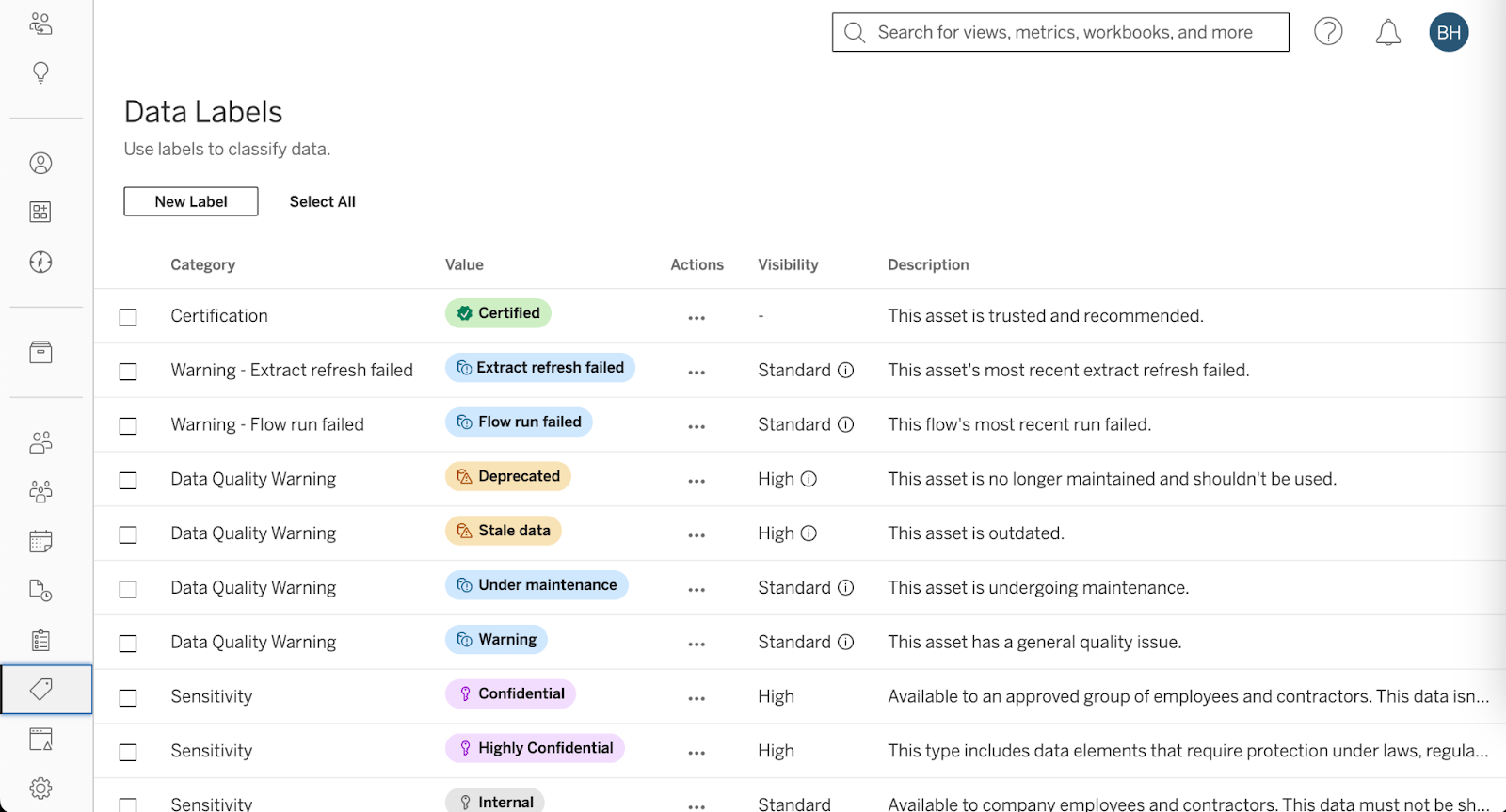
When creating a new label, you choose which category it should belong. The main thing to consider is that Data Quality Warnings and Sensitivity Labels are inherited by downstream content and have different sensitivity levels, while any custom categories are not.
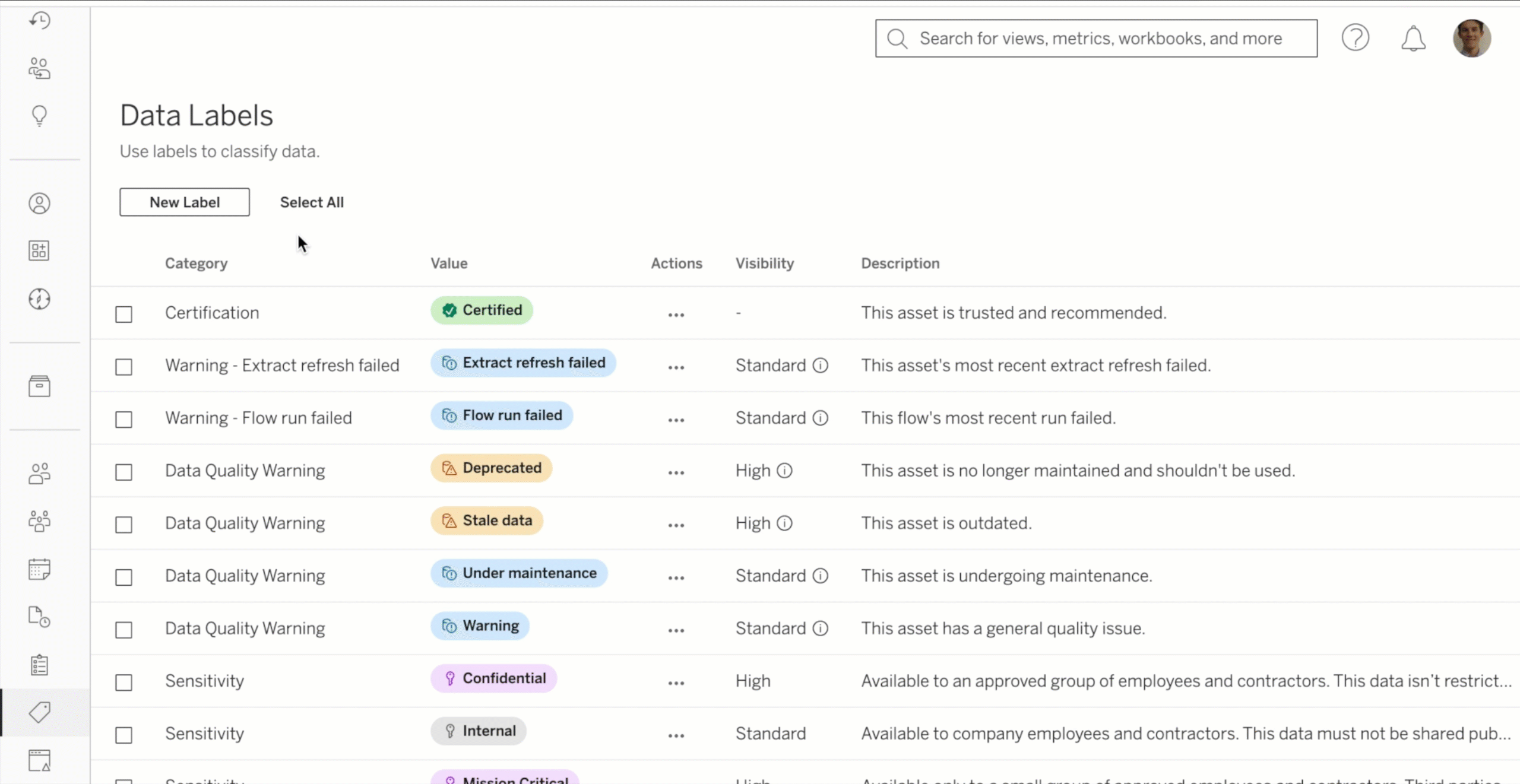
You may ask yourself, “What’s the difference between a Data Label and a Tag?” Data Labels are predefined and can only be added by those with ‘Edit’ or ‘Overwrite’ permissions. When a Data Label is added to an asset, Tableau stores additional metadata to increase trust and governance around who and when it was set. No more worrying that someone might delete a tag or misspell ‘Level 3 Compliance’. Most importantly, our built-in labels, Data Quality Warnings, and Sensitivity Labels are inherited by downstream assets.
Once a Data Label has been defined, it can be applied to any data asset in Tableau with a few clicks.
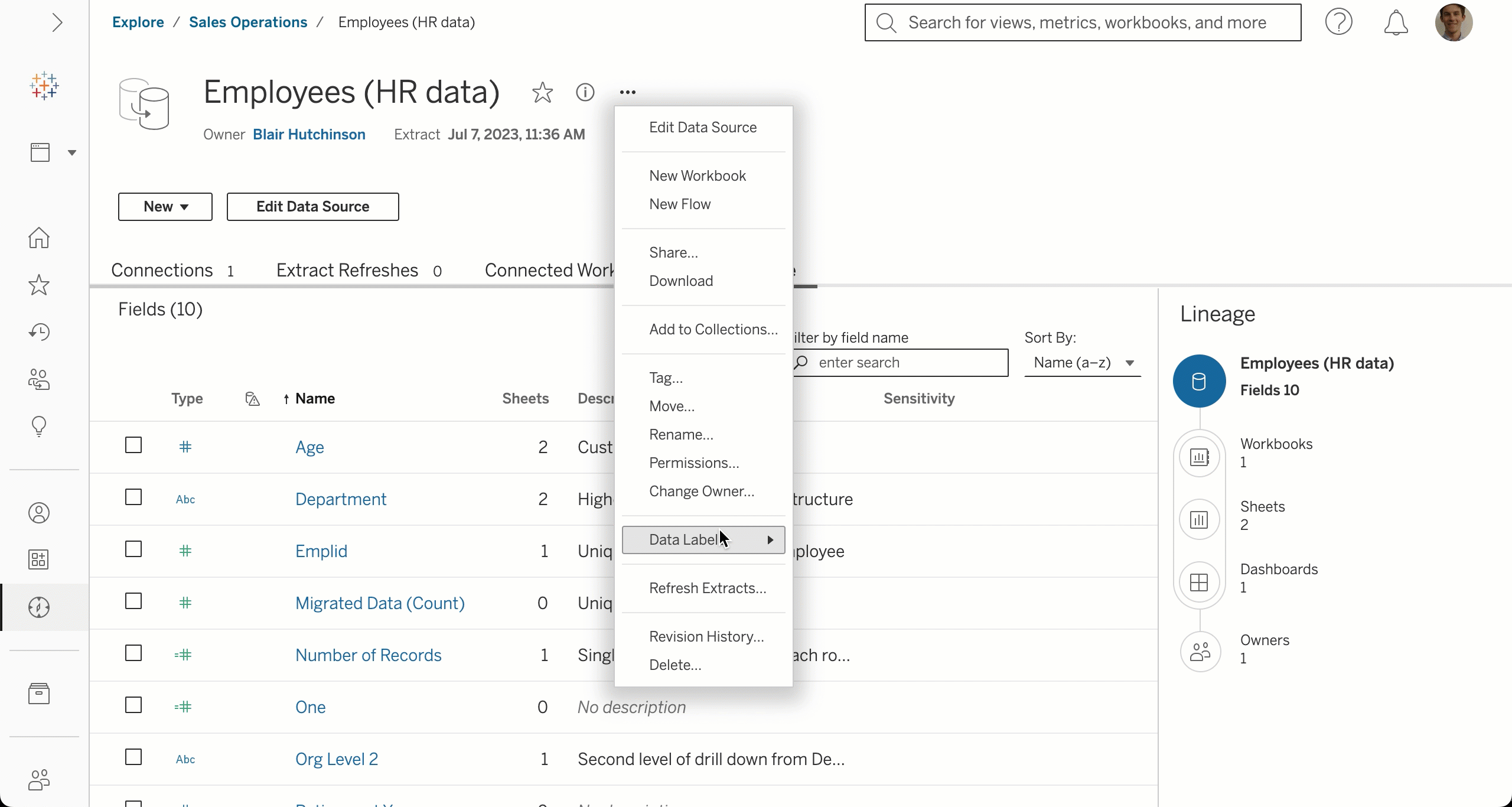
Data Labels are displayed along the top of the screen (see above) where you can click on them for additional context. Data Labels with inheritance are also brought directly to Tableau authoring and viewing. This way, users are alerted if the data is sensitive or has a quality issue directly in the flow of their work.
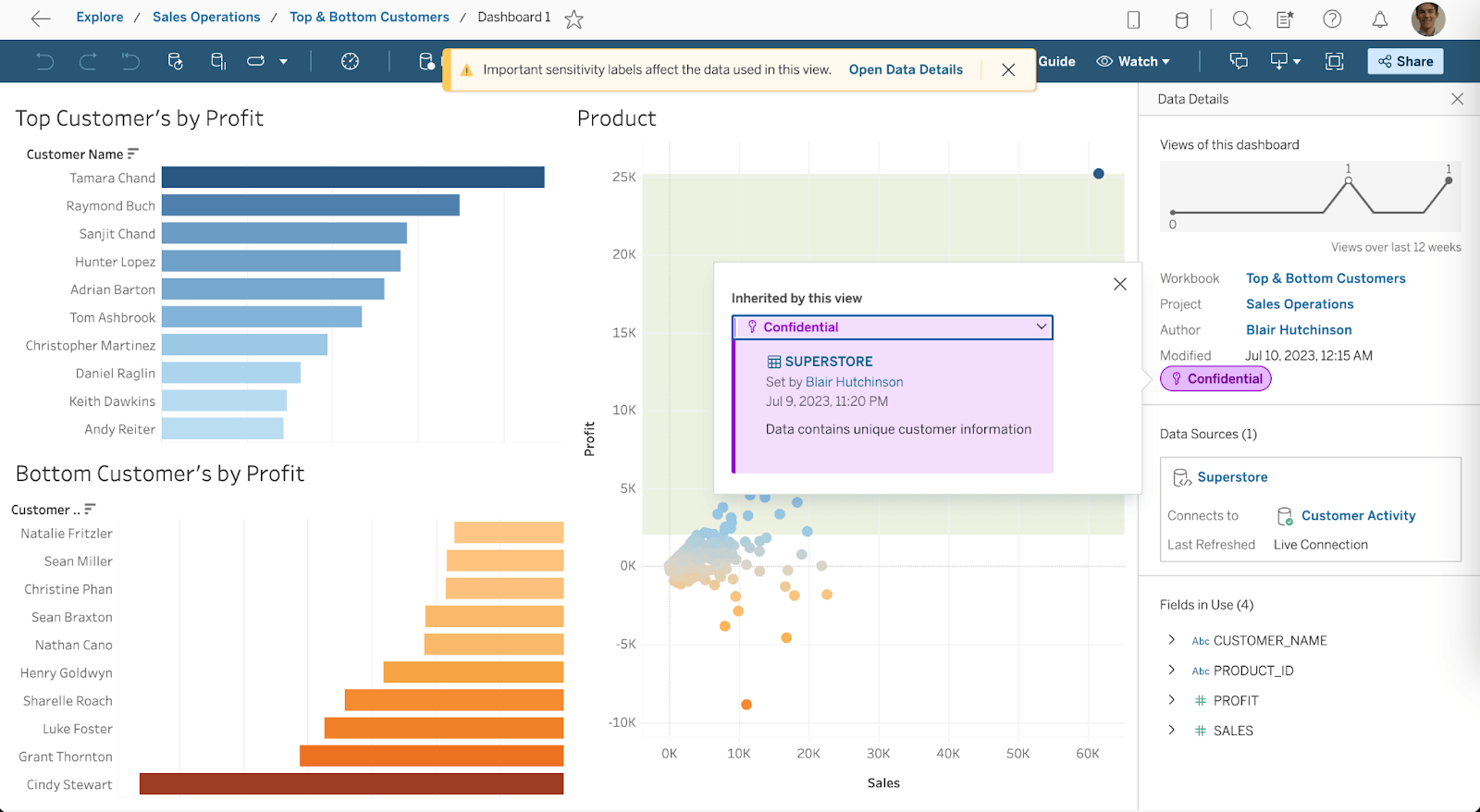
Metadata Exchange
Tableau is where people come to make decisions with data, which is why we’re so excited about this feature, but we know that data labeling happens in more places than just Tableau. So, we needed to allow our customers and partner ecosystem to add, create, update, and apply Data Labels via our REST API. Whether you’ve made a homegrown metadata management solution or invested in one of our Metadata Partners, such as Alation, Collibra, Atlan, or another, you can keep your metadata in sync.
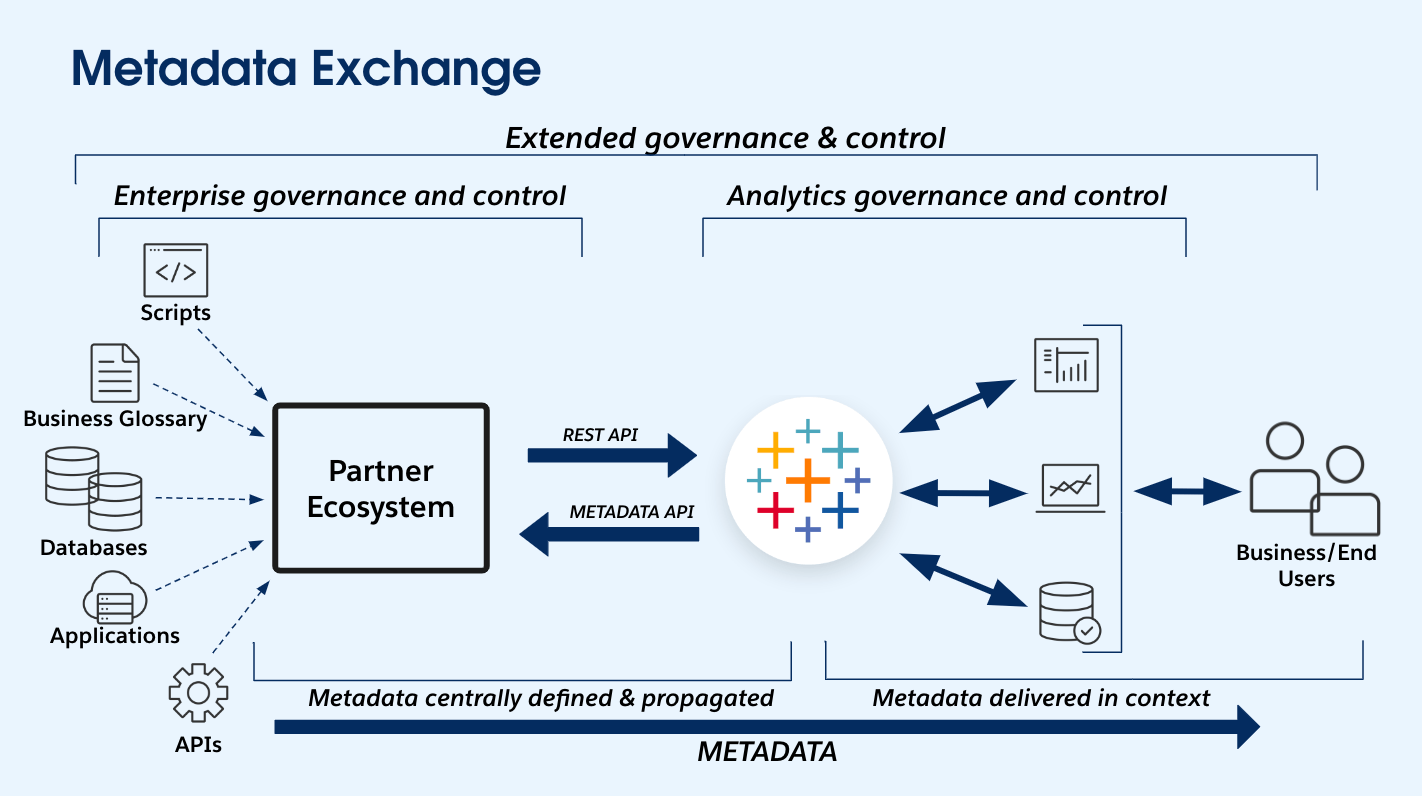
Auditing Data Labels
What data on my site is labeled as “Highly Confidential”? We can understand how Data Labels are used across Tableau with GraphQL. With a simple query like the one below, you can return all assets labeled “Highly Confidential” in JSON.
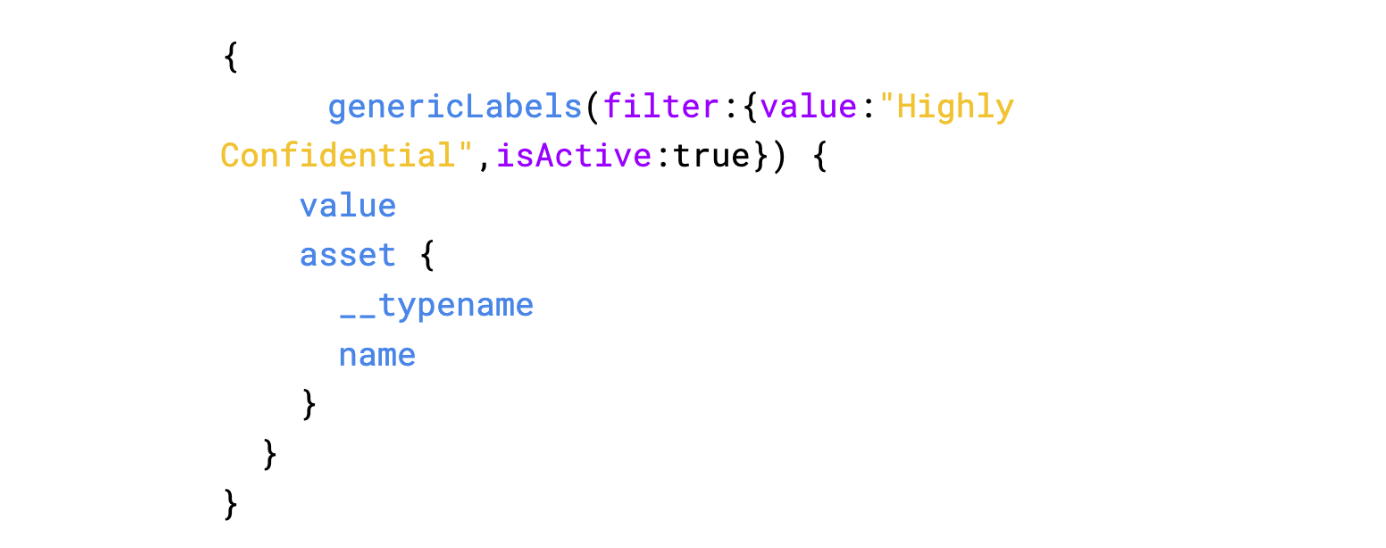
Similarly, you can filter by Label Categories by changing the value: "Highly Confidential" to the category: "SENSITIVITY". Want to see these results in a dashboard? Share your feedback on the ideas forum, and stay tuned!
Get Started Now
Learn about all the benefits Tableau’s Data Management Add-On offers! To explore our latest features, including Data Labels, upgrade to Tableau 2023.3 today, and we eagerly await your feedback on the ideas forum.









